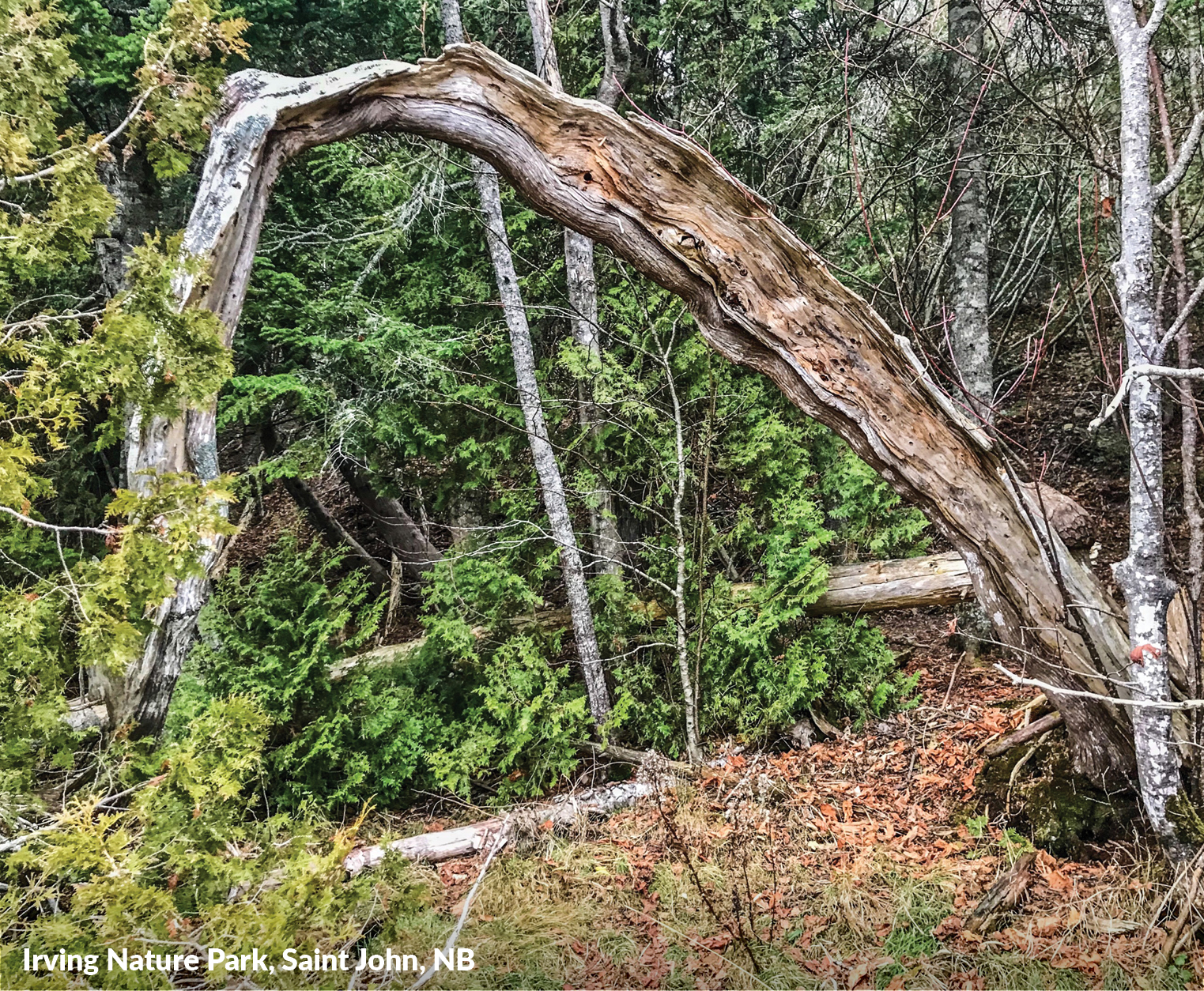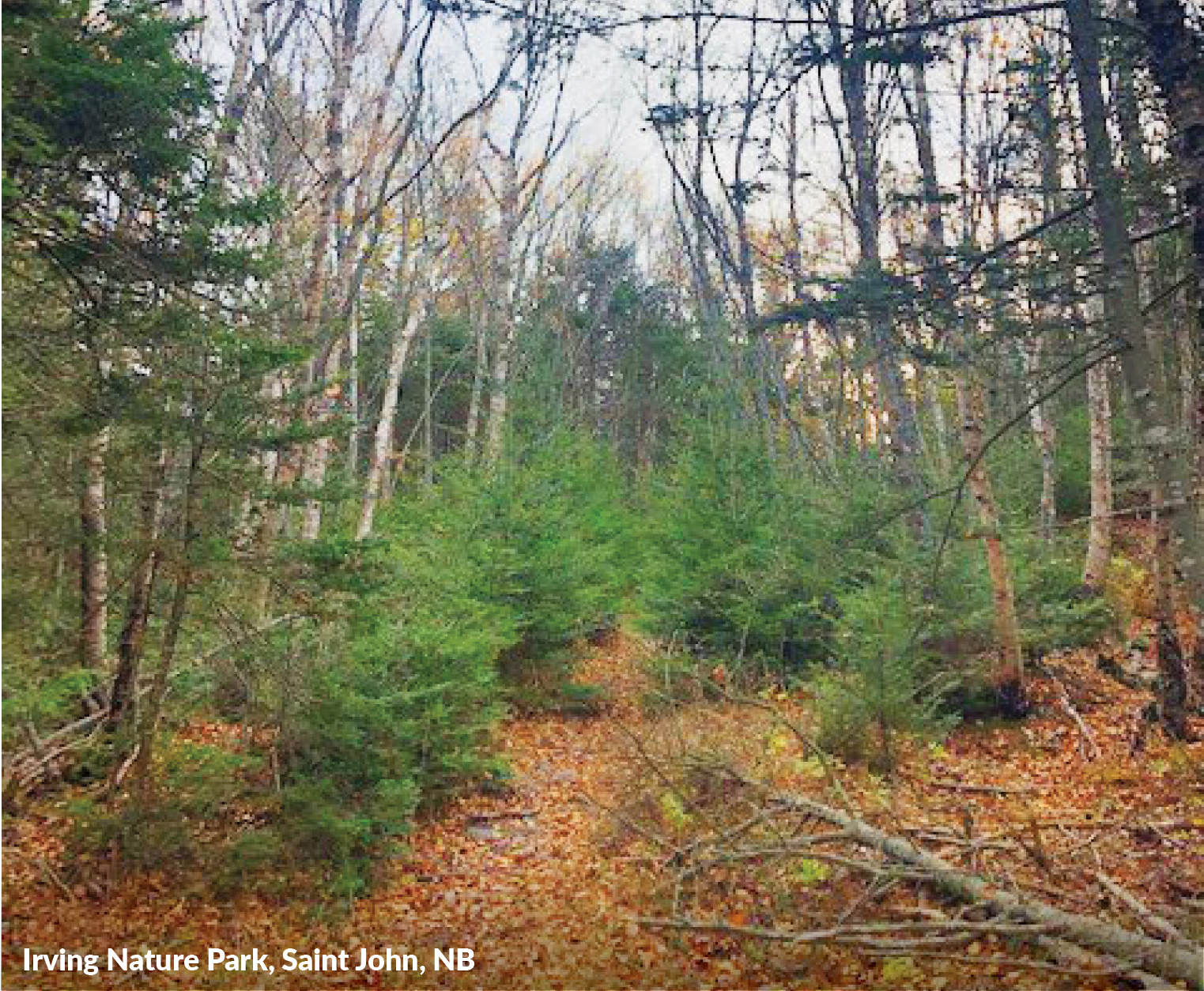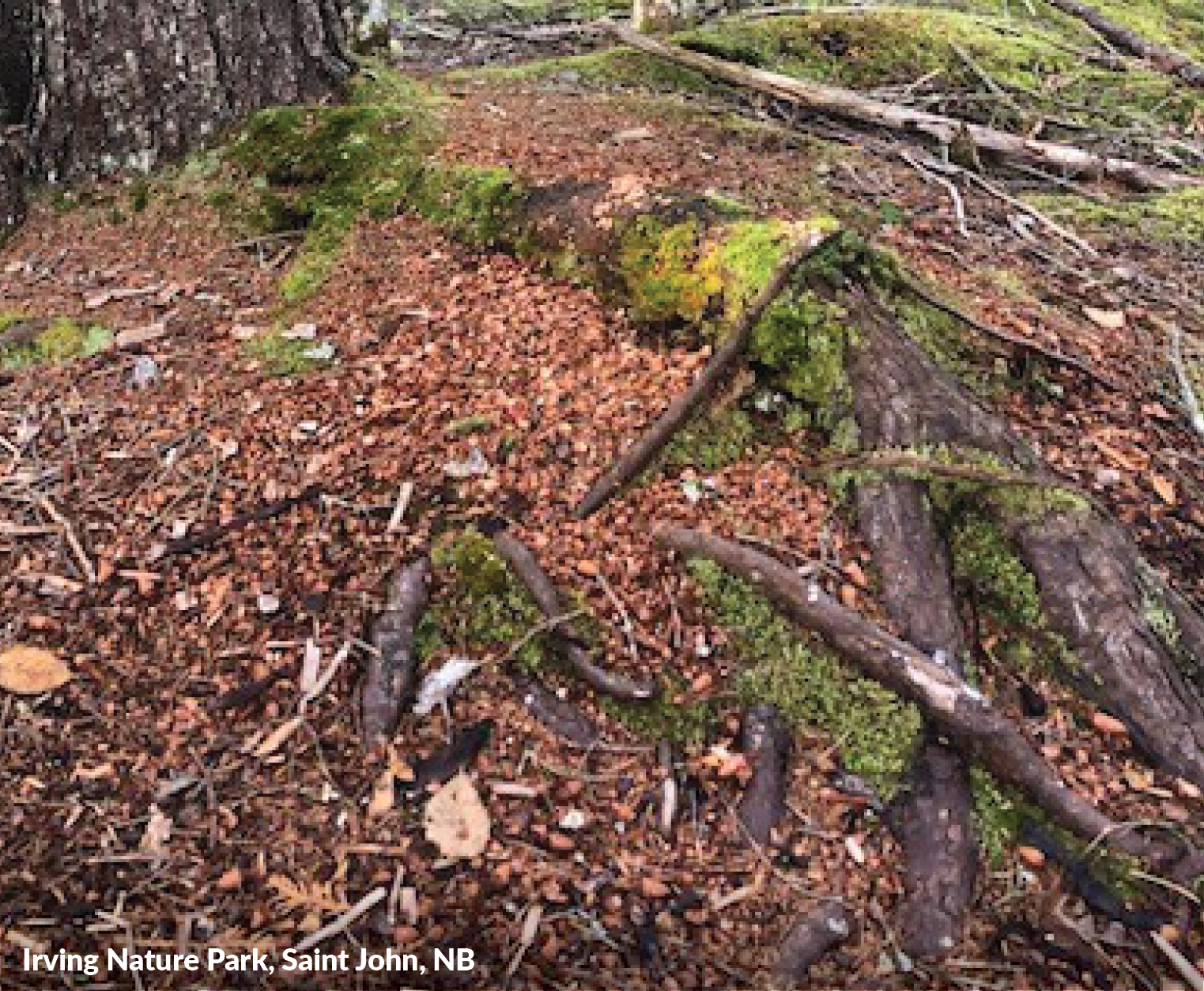DID YOU KNOW

CEDAR TREE
This interesting tree could have been shaped by a neighbor falling down and landing on its top creating a “hoop” effect. When this occurs in Cedar species the top of the tree actually “shoots” back up making it appear like the tree grew twice. While this tree may have grown in a unique way – it is still very much an alive cedar tree.

FOREST REGENERATION
Forests regenerate in different ways, either naturally or by planting. This example shows Balsam Fir reaching maturity and beginning to fall down. When enough trees die, it creates openings for more sunlight to reach the forest floor starting the cycle over. The seedlings which come back, race to get established first and take advantage of this new light and nutrients to grow. These trees will take 80 years to grow. After forest harvesting takes place, trees like Spruces and Pines are planted to help speed up the renewal of the areas where similar trees would have been harvested.

SHALLOW ROOTS
Tree species have unique strategies for getting the nutrients and water they need from the ground. Some trees have deep root systems called “Tap” roots which go deep in the soil to get what they need while others have shallow roots which creep along the forest floor in large webs. Sometimes when sites are wet or rocky or where soils are tough and compacted, the roots cannot penetrate the ground, so they naturally work their way out from the trunks looking for their nutrients and water. In Forestry, these sites can be challenging as the trees are highly susceptible to wind throw and vast areas could blow down during major weather events. Our Foresters take time to consider tree species and sites where trees have the potential to “root shallow” when we plant.

BUDWORM CORNER
Insect pests like spruce budworm are a natural, but devastating pest in our region. In the period between 1975 and 1980, the forests of New Brunswick experienced an attack of spruce budworm (Choristoneura fumiferana). A forest inventory taken in February of 1965 shows this area as heavy to balsam fir and red spruce with a smattering of white birch. Although called spruce budworm, the caterpillar stage of this moth actually prefers to feed on the needles of balsam fir but will also eat spruce as well. This part of the park made for an ideal budworm feeding ground. If you look at the height of the softwood trees in this area, you will notice they are similar height which suggests they are all the same age, the stand obviously recovering from this catastrophic event. Looking closely, deep within the stand, you will find a few standing dead trees still upright from that late 70’s feeding frenzy.
Normal forest management would call for a thinning of this thick fir stand so that the better trees will have less competition for nutrients, moisture and sunlight. This is done with the same rational that farmers take when thinning their carrot crop to get optimal growth. Park staff have left this thick stand as is for interpretive purposes, to begin a conversation about this cyclical forest pest.